Straight from the fertile Sindhu valley, comes a cuisine, that like its people, is daddho sutho

Sai Bhaji
Like every Sunday, this afternoon too, most Sindhi households would have the tangy, mouth-watering aroma of curry-chawal wafting from the kitchen. The scent is so heady that even neighbours know, aaj khane mein kya hai. As thin as the community is stretched across the country, food —and the love for it—is perhaps the thread that binds it together. Be it a wedding or a funeral, you will never find the fervour lacking.
ADVERTISEMENT
The recipe for the Sindhi curry is unique to each household. For instance, in this writer’s home, tomato-based puree is used. Other vegetables—singi (drumstick), meya (pumpkin) potatoes, okra, and cauliflower—are cut into big chunks, boiled and added to the curry. However humble the dish sounds, it will leave you licking your plate clean time after time.
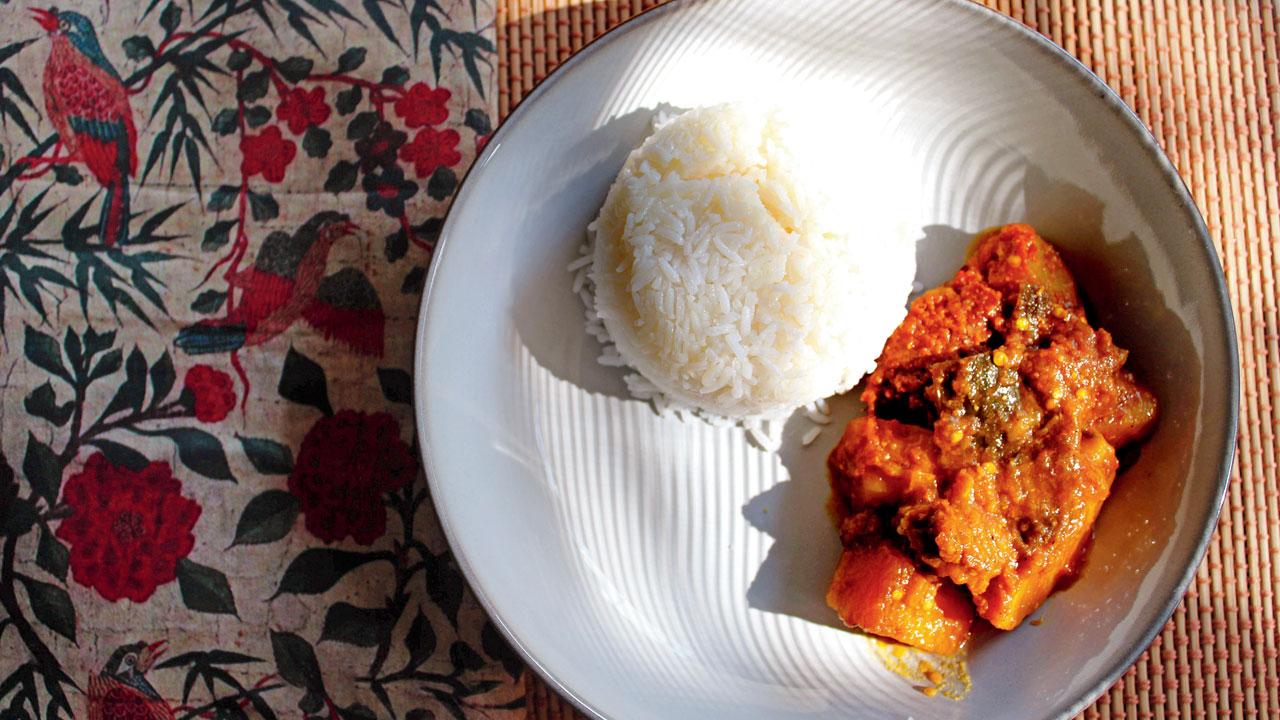
Vadi Aloo
Malabar Hill-based home chef Namrata Thakur says, “We have clients who order Sindhi curry and tuk every week. No matter how much you make, the tuk always falls short.” Thakur and her sister, Sapna Bajaj started catering Sindhi food around 10 years ago. With a laugh, Thakur confesses that it was their friends who pushed them to take the plunge. She adds, “We started as a confectionary but after noticing the lack of Sindhi restaurants, we decided to start catering Sindhi food as well,” says Bajaj. While all of their dishes are immensely popular, the Sindhi mutton never misses its mark. The biggest compliment, they say, is when Sindhi clients order from them. “It takes years to acquire this skill,” says Bajaj, “our mother and grandmother probably still do it better than us. We’re just continuing the legacy.”
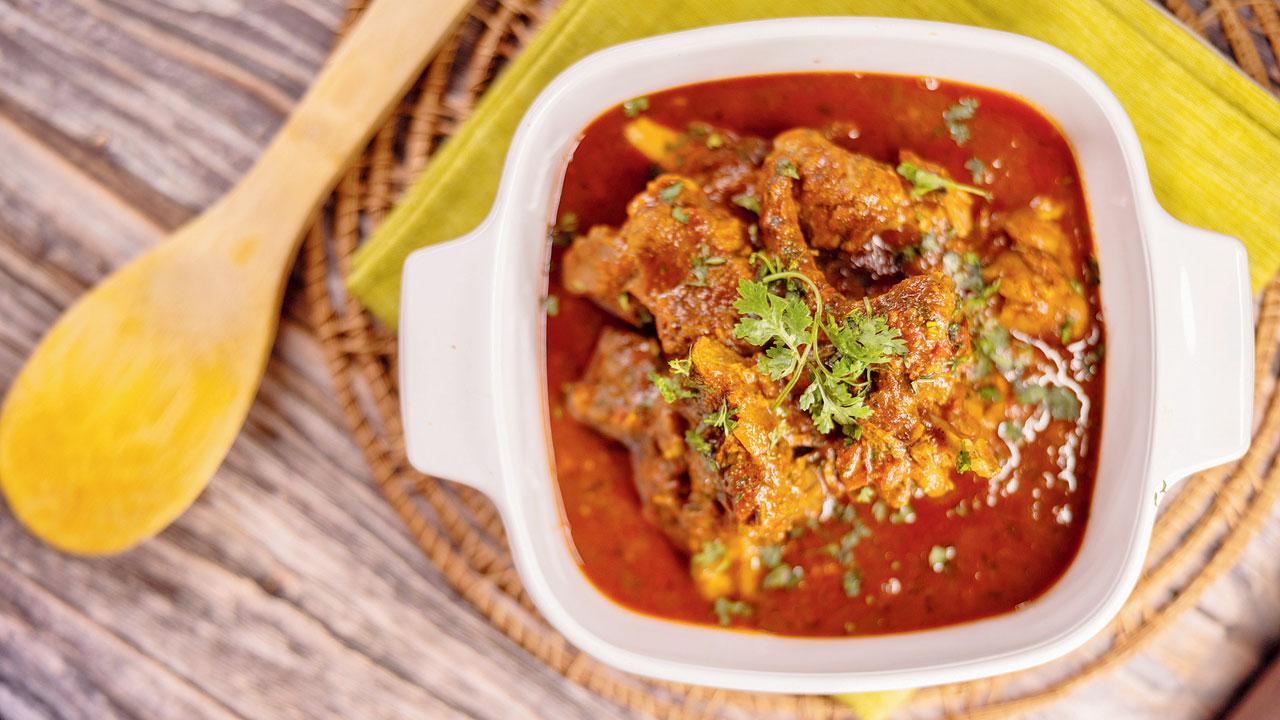
Sindhi Mutton
The sisters have, of course, added their little twists to some of the most popular recipes. “Sindhis are very economical with their food. We make seyal bread (a kind of wrap) with leftover roti and adding garlic, mint, cilantro and spices to make a quick snack. Cheese is added to leftover sai bhaji (spinach gravy) to make a protein rich tikki,” Thakur recommends. For the upcoming winter, Bajaj advises stocking up on her personal favourite, dal-dhoda, a popular breakfast item with the latter being a combination of flatbread kneaded with fresh garlic.
Khar-based Vijay Raheja feels that Sindhi food hasn’t been served its due for several reasons, and that was one of the reasons why he recently started the home kitchen, Spicy Sindhi. Their dal pakwan is one of the best we’ve tried in the city. “We often discuss at home as to why Sindhi food hasn’t gained as much popularity,” he says.
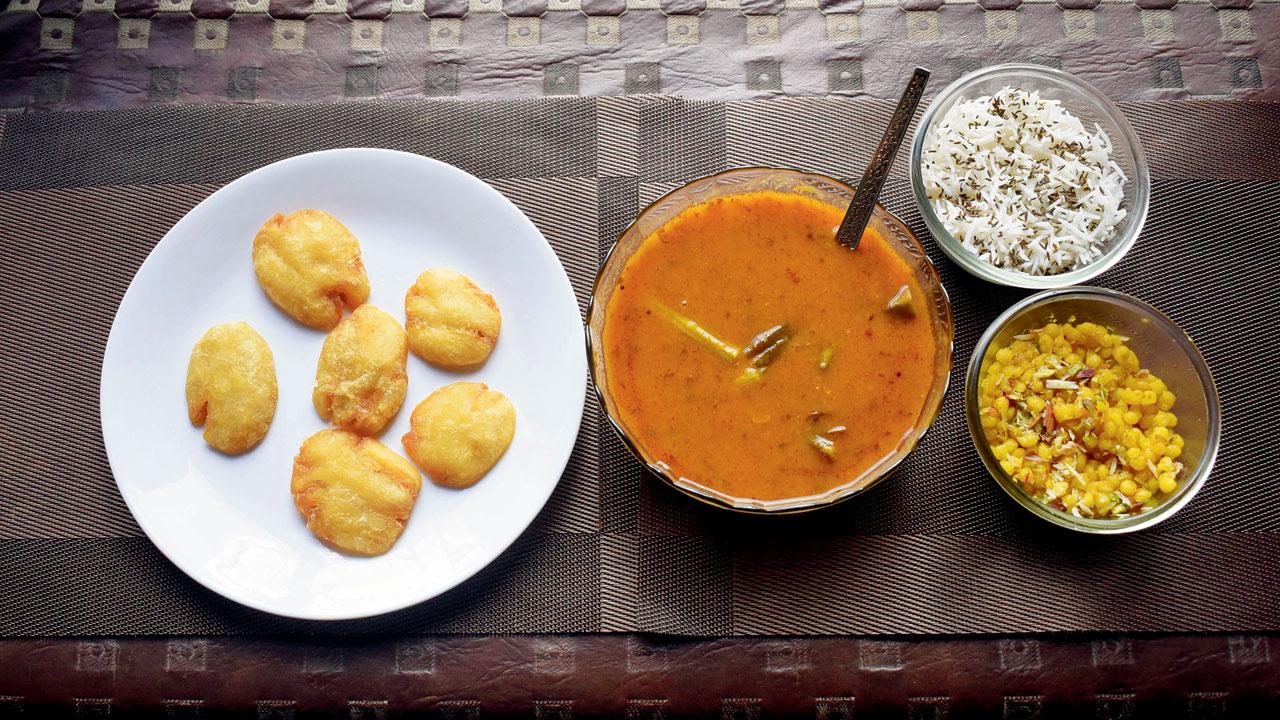
“For one, Sindhi culture has been influenced a lot by the Punjabi and Sindhi Muslim community, and it is most apparent in the food. This restricted it to not emerging and having an identity of its own, even though many dishes have a very distinct flavour profile. So not until recently, when more and more people became open to trying regional cuisines did Sindhi food get noticed. Secondly, after the Partition, Sindhis who migrated to India, spread to different pockets across the country. In these neighbourhoods, you’ll find the one-odd shop selling our groceries and delicacies that have become quite popular—like Tharu in Khar or Jhama in Chembur. These have been instrumental in offering a taste of the cuisine to those from outside the community as well.”
Speaking of lesser-known Sindhi dishes, two that instantly come to Raheja’s mind are tahiri saag—a sweet saffron rice served with spicy tangy vegetable gravy made with aloo, baingan and beeh [lotus stem]. “In Sindhi cuisine, we use a lot of beeh; this gravy is on the spicy and tangy side, and is served with sweet rice. The combination is interesting to the palate—it is a household favourite but those from outside the community, who try it for the first time, rave about it for days,” he adds.
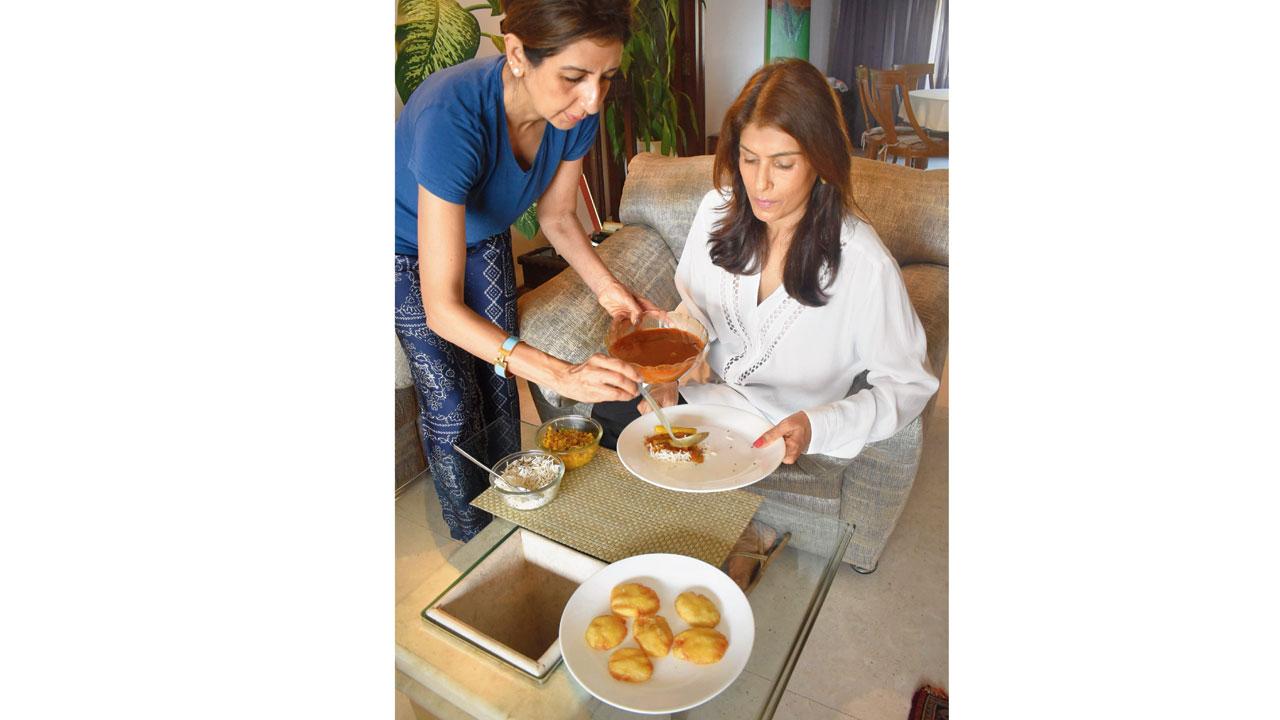
Malabar Hill-based home chef Namrata Thakur and Sapna Bajaj get frequent orders for Sindhi curry and alu tuk. Pic/Sameer Markande
The second dish that comes to mind is vadi aloo and rice. The vadi is the same lentil dumpling used in Punjabi cooking, but Sindhis make it in a different preparation with potato, in a tangy spicy tomato onion gravy. It is served with rice and boondi raita. “Most restaurants don’t feature these dishes but they deserve being talked about when it comes to Sindhi cuisine,” he adds.
Another young chef who has learnt to add his own twists and turns to recipes passed down through decades is 16-year-old Om Hemdev. On his Instagram account, you can find some of these including mithi dhabal (Sindhi sweetbread). Another memorable one, he says, is his version of the first Sindhi dish he made—aloo tuk. Hemdev adds a pan-Asian piquancy to it by sauteing the tuk along with some garlic and srping onion. He then adds a sweet-sour Korean sauce, gochujang. Another recipe from his grandmother’s kitchen is their signature Sindhi mutton.
“We use mushki (calf of the lamb), which is notorious for taking a long time to cook,” he says. “It takes about two to three hours to make. You start with roasting the mutton in a pot, mixing all the spices and then taking it out. You add ginger and garlic paste along with some chopped onions, tomato as well and my grandmother’s special mix of spices.” And then let it cook for a long, long time with water. “Sindhi food is not as appreciated probably because it gets overshadowed by other regional cuisines. The only way that I know to share this culture with others is through food. So that’s what I’ve done, I’ve posted a lot about it,” adds Hemdev.
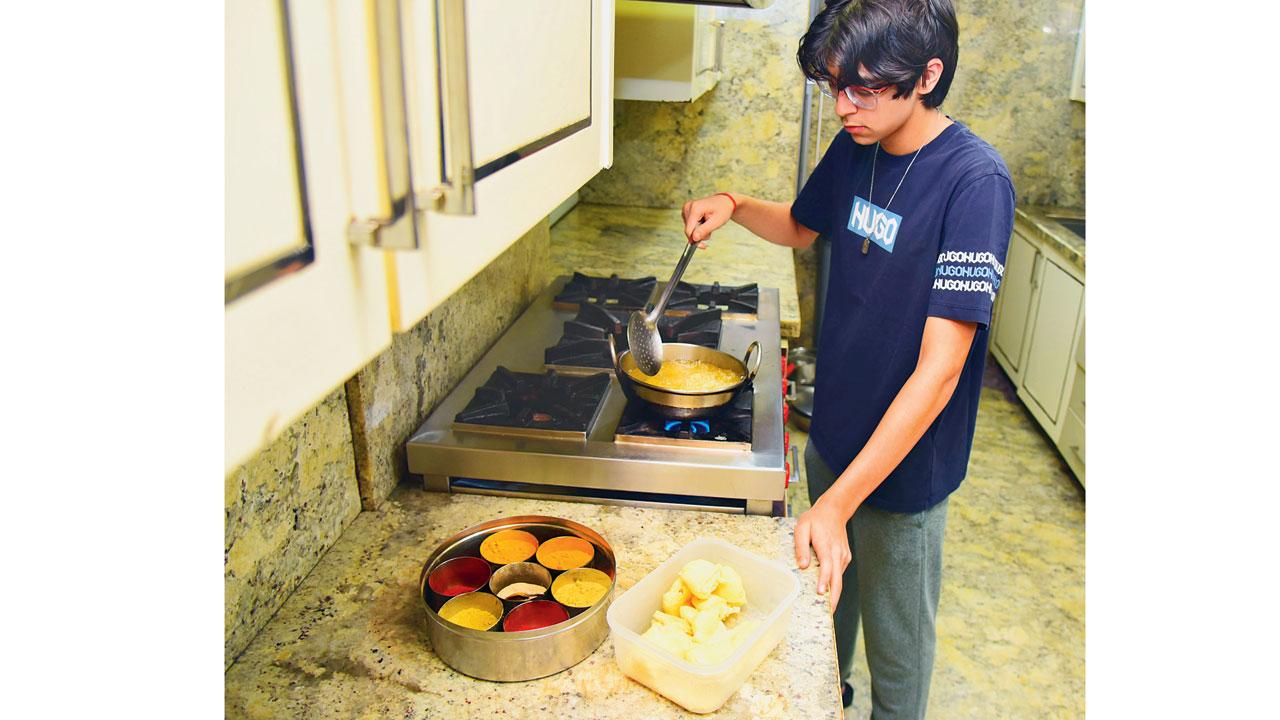
Home chef Om Hemdev, just 16 years old, adds a pan-Asian piquancy to alu tuk, making it more relatable to youngsters. Pic/Shadab Khan
Another chef, who has recently found fame on Instagram, is Bhavisha R Jaisinghani. An Ulhasnagar resident, she runs cooking classes and posts various Sindhi recipes online. “People have showered a lot of love on Sindhi food. It’s different now, young people are reaching out and are interested in knowing more about their heritage. My followers request me to show them how to make lollas (sweet flatbread) or besan tikki the traditional way—exactly how their nanis or dadis used to cook,” she says. One of these is sai thum mai macchi (fish in green-garlic sauce).
You can use either surmai (mackerel), singari or rohu fish. Marinate it for 15-20 minutes in salt and lemon juice. This also helps get rid of odour. Then, wash the fish and dip it in dry spices; haldi, dhaniya powder and red chilli powder. Pan fry the fish with minimal oil. In a separate pan, saute green garlic, tomato and spices. Now, slip the fish into the pan, mix well and let it cook for about five minutes.” For vegetarians, she suggests potatoes as an equally savoury alternative. Both her children, a 20-year-old daughter and 16-year-old son are adept at the art and can stand in for her if need be to teach any of the classes. “Often young men, who are moving abroad, come to learn cooking. I also teach them via video call whenever they need help,” Jaisinghani says.
If you’re craving Sindhi food that feels like a warm hug from home, Priya Jham has you covered. Jham runs a cloud kitchen, Sindh Zaika, based in Mahim. They deliver meals and snacks all across Mumbai. Jham also caters for parties, dinners and other events. “We have a mixed clientele,” she says, “The variety and taste always ensures it’s a hit, no matter what occasion.” Not one to shy away from experimentation, Jham’s bhee chips and baigan chips are a crowd favourite. The recipe is quite simple, she says. You slice them thinly and soak them in salt water for some time. Then, after you pat dry them, simply deep fry.
Off the shelf
>> Tharu’s Mukhi Bhandar, Khar
Singar ji mithai (sev barfi), maaye-ka-laddu to layi (Sindhi chikki made of khas-khas)
To order: tharusweets.com
>> Sindhful, Khar
Traditional chole-chutney-pattice with pao, koki with bondi-raita and vegan chaap tikka options.
To order: 97693 94968
>> Dadho Sutho, Kandivli
Dal-pakwan. Dadho-Sutho brings you the Sindhi tadka you need to spice up your breakfast.
To order:
>> Jhama, across Mumbai
Doda barfi, strawberry katli, pista halwa along with namkeens.
To order: jhamasweets.com
>> Kailash Parbat, Colaba
Bhee-chana, koki, matha, Sindhi curry
With inputs from Nasrin Modak Siddiqi
 Subscribe today by clicking the link and stay updated with the latest news!" Click here!
Subscribe today by clicking the link and stay updated with the latest news!" Click here!







